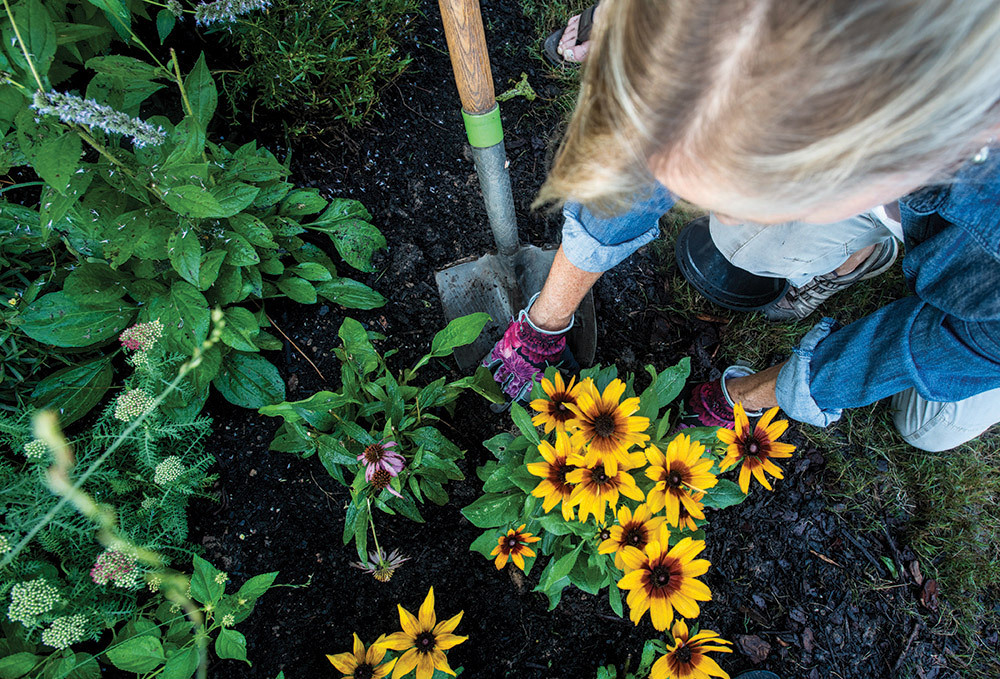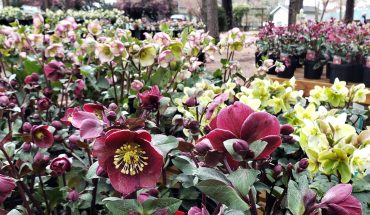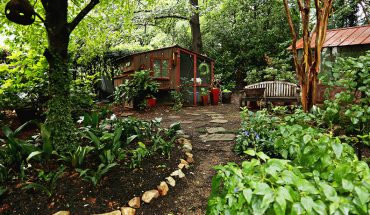Your monthly list of Oak City-specific tips on what to be doing in your garden right now.
by Tina Mast

Just because it’s winter and many plants are dormant doesn’t mean your garden doesn’t need some TLC! Now is a good time to prep for spring which, will be here before you know it. Plus, it’s already time to start certain vegetables and seeds. So pick a mild day, layer up your clothing, bring a mug of your favorite hot beverage, and enjoy the peace and fresh air of the garden. Here’s what you can work on:
Plant cool-season veggies as well as hardy trees, shrubs, and perennials:
Now’s the time to plant cool-season veggies such as Irish potatoes, garlic, onions, and hardy lettuce as well as perennial vegetables such as asparagus and horseradish. Young plants may need to be protected with plant protection bags or blankets. Many shrubs and trees can be planted if the ground is not too wet or frozen. Want some color now? Look for winter daphne, golden paperbush, wintersweet, (those three have great fragrance!). For more seasonal interest, consider flowering quince, camellias, winter jasmine, and witch hazel. Japanese apricots, Corneliancherry dogwood, and ‘Okame’ cherries are among the first trees to bloom in late February or early March. And, the winter garden is incomplete without some long-blooming, evergreen, deer-resistant hellebores, also known as Lenten rose.
Prepare Planting Beds:
The best way to do this now is to layer 2″ of pine bark soil conditioner or Permatill with 1″ of compost over the bare ground and till it in to 8-10″ deep. You can add topsoil over that and till again if you want to create raised beds. (Raised beds do not have to be rectangular with wood frames.)
Start seed for herbs, plants, and other flowers:
Mid-February is not too early to start seeds of peas, carrot, radish, lettuce, greens, and spinach indoors, and transplants of parsley, cilantro, cabbage, leek, broccoli, Brussels sprouts, kale, celery, cauliflower, and collards but watch the weather since winter weather is often uneven. Plant seeds of sweet peas, larkspur, and poppies. Herbs such as basil, chives, parsley, sage, summer. Savory and sweet marjoram can be started indoors from seed now.
Weed Control:
Put down a pre-emergent for crabgrass and spring weeds.
Prune deciduous trees and shrubs & roses (but NOT spring flowers such as azaleas):
Most deciduous trees and shrubs are best pruned in late winter to early spring.
Some basic cutting techniques:
- Cut back to 1/4″ above buds.
- Cuts should face away from buds.
- Make cuts on a 45° angle.
- Cut above an outward-facing bud to direct growth away from the center of the plant.
- For limbs larger than twigs, be sure to cut the limb just past the swollen area where the branch and the trunk meet called the branch collar.
Check-in with your tools:
Sharpen and oil hand tools then sharpen your lawn mower blades as well as change its oil, filter, and spark plugs. New electric models are less maintenance and cleaner for you and the environment. Rusty tools can be soaked in white vinegar overnight then scrubbed with a scrubbing pad to remove rust. Dry them well and coat with mineral or camellia oil.
Ward off pests and disease:
This is a great time to kill overwintering insects such as mites and scale on shrubs & trees including roses and fruit trees. Smother insects and egg masses by spraying plants with All Season Spray Oil when the temperature is between 40-85°F. Do not apply within 24 hours of freezing weather. To reduce disease problems, remove dead leaves and decayed fruit from under trees. Help prevent camellia petal blight by mulching 4″deep around susceptible camellias, keeping the trunk area clear of mulch, and replacing the mulch annually after flowering. Pick off any diseased or fallen flowers. For severe infestations, spray with a fungicide such as Fungonil.
___
Garden writer Tina Mast works with Homewood Nursery and Garden Center in Raleigh.


